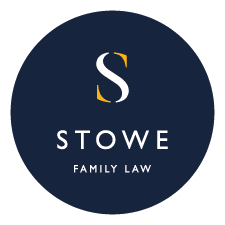The appalling extent of child abuse: On the 14th of January the Office for National Statistics (‘ONS’) published its first ‘compendium’ of statistics for child abuse in England and Wales, for the year ending March 2019. As it contains some truly appalling figures, I thought I should take a closer look.
Better understanding
As the ONS states, the statistics bring together a range of different data sources from across government and the voluntary sector, “with the aim of providing a better understanding of child abuse than is possible from looking at individual data sources.” The statistics were produced by the ONS, working in collaboration with the Department for Education, the National Association for People Abused in Childhood, the National Society for the Prevention of Cruelty to Children, and the Welsh Government.
I will set out in full the five main points:
- The Crime Survey for England and Wales estimated that one in five (20.7%) adults aged 18 to 74 years experienced at least one form of child abuse, whether emotional abuse, physical abuse, sexual abuse, or witnessing domestic violence or abuse, before the age of 16 years (that’s a total of 8.5 million people).
- Many cases of child abuse remain hidden; around one in seven adults who called the National Association for People Abused in Childhood’s helpline in the latest year had not told anyone about their abuse before.
- In the year ending March 2019, Childline, the counselling service for children and young people, delivered 19,847 counselling sessions to children in the UK where abuse was the primary concern; around 1 in 20 of the sessions resulted in a referral to external agencies.
- At the 31st of March 2019, 49,570 children in England and 4,810 children in Wales were looked after by their local authority because of experience or risk of abuse or neglect.
- Around half of adults (52%) who experienced abuse before the age of 16 years also experienced domestic abuse later in life; compared with 13% of those who did not experience abuse before the age of 16 years.
An epidemic
These are truly appalling findings, although perhaps for a jaded family law hack like myself perhaps not entirely surprising. To think that one in five adults in this country experienced child abuse is just horrendous. Child abuse is an epidemic, which we must all strive to eradicate.
As this blog is aimed towards private law matters, rather than public law (i.e. care proceedings), I want to concentrate upon the private law aspects, in particular relating to the issue of children suffering or witnessing domestic abuse.
The Crime Survey referred to in paragraph 1 above breaks down the figures into different types of abuse. We are told, for example, that nearly 10% had experienced emotional abuse, that 7.6% experienced emotional abuse, and that nearly 10% witnessed domestic violence or abuse. We are also told that just under half of the victims experienced more than one type of abuse.
Self-perpetuating
And then let’s think about paragraph 5 above, which must resonate with all family lawyers. Domestic abuse is self-perpetuating. How many times have we heard of abusers and the abused alike suffering or witnessing abuse as children? If it is the ‘norm’ in childhood, it will become the norm in adulthood. Breaking this cycle is one of the hardest tasks, and as I suggested here just last week, education must surely have to play a large role in that task.
What else can we learn from the statistics? Well, as the ONS warn, caution is needed when interpreting the figures, but they suggest (amongst other things) that women were more likely than men to have experienced abuse before the age of 16 years, that adults with a disability were around twice as likely to have experienced abuse before the age of 16 years, and that lesbian, gay or bisexual adults were more likely to have experienced abuse before the age of 16 years. Perhaps these matters, which again are not entirely surprising, could inform our response to the child abuse epidemic.
Hopefully, this publication will become a regular thing and will help us all understand the nature, extent and effect of the scourge of child abuse.
You can find the ONS release here.
Get in touch
If you would like any advice on a family law issue, you can find further articles here or please do contact our Client Care Team to speak to one of our specialist family lawyers here.
